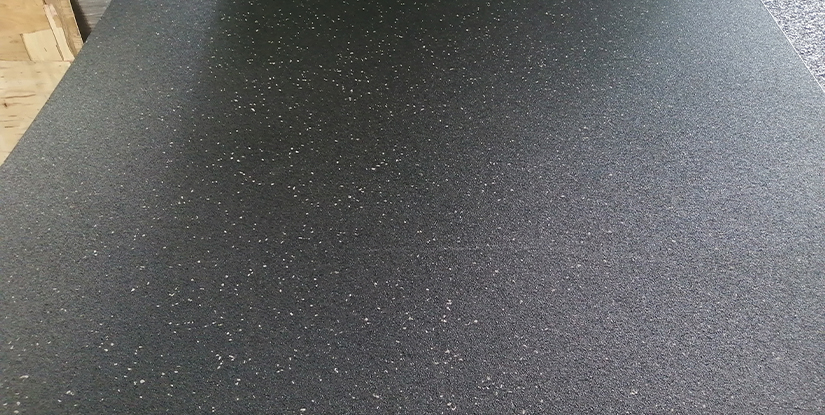Best Workout Mat for Carpet: Stability, Cushioning & Anti-Slip Tips

Choosing the Right Workout Mat for Carpeted Floors
Working out on carpet introduces unique challenges: instability, sinkage, and potential movement of your mat during dynamic exercise. Selecting a workout mat designed for carpeted surfaces improves safety, comfort, and performance. This guide provides practical, professional recommendations to help trainers, athletes, and home exercisers choose and maintain the ideal mat for carpeted environments.
Key Considerations for Carpet Use
- Stability: Preventing slip and lateral movement is a top priority on pile or loop carpets.
- Thickness and Density: Balance cushioning with firmness to avoid sinking during weighted work.
- Material Compatibility: Choose materials that provide traction without degrading carpet fibers.
- Hygiene and Maintenance: Carpets trap moisture and dust; the mat should be easy to clean and ventilate.
- Purpose-Specific Design: Different activities—yoga, Pilates, HIIT, weight training—require different mat attributes.
Recommended Materials
Material selection affects grip, durability, odor, and sustainability. Common options include:
- Natural or Synthetic Rubber: Excellent grip and density suited for carpet; heavier, less likely to shift.
- TPE (Thermoplastic Elastomer): Lightweight, good traction, closed-cell construction resists moisture.
- High-Density PVC: Durable and cost-effective; may be slippery on certain carpets unless textured.
- Closed-Cell Foam: Provides moisture resistance and easy cleaning but can compress on high-pile carpets.
Thickness and Density Guidelines
Thickness is not a one-size-fits-all metric. Choose based on activity and carpet pile:
- Yoga and Stretching (3–6 mm): Thinner mats provide stability and allow better alignment cues on low-pile carpet.
- Pilates and Floor Fitness (6–10 mm): Moderate cushioning protects joints while maintaining stability.
- HIIT and Plyometrics (6–12 mm with high density): Prefer dense foam or rubber to absorb impact without excessive sinkage.
- Weightlifting (12 mm+ or rubber tiles): Thick, dense platforms or interlocking rubber tiles prevent compression and protect both floor and equipment.
Anti-Slip Strategies on Carpet
Because carpet fibers can create uneven friction, combine mat selection with anti-slip measures:
- Choose mats with textured bottoms or proprietary non-slip coatings designed for carpet.
- Use a thin anti-slip underlay specifically rated for carpets—silicone or latex-backed liners can anchor the mat.
- Consider heavier mats or rubberized designs that rely on mass to resist movement.
- Secure corners with carpet tape or double-sided adhesive strips if a semi-permanent installation is acceptable.
Size and Coverage
Measure your workout zone and select a mat that covers movement patterns required by your routine. Standard yoga mats (68–72 inches long) may suffice for static routines, but dynamic workouts benefit from larger mats or multiple pieces that reduce carpet exposure and protect from wear.
Ventilation and Hygiene
Carpets retain heat and moisture, increasing the risk of odors and microbial growth beneath a mat. Best practices include:
- Remove and air out your mat after use; roll with the outer surface in to allow breathability.
- Use mats with closed-cell surfaces to inhibit moisture absorption.
- Regularly disinfect according to manufacturer guidance to prevent mildew buildup between mat and carpet.
Installing and Positioning Your Mat
For optimal performance on carpet:
- Place the mat perpendicular to the carpet pile to reduce directional slip for some carpets.
- Avoid placing mats over deeply textured patterns or transitions between carpet and hard flooring.
- Check for furniture legs or uneven subfloor areas that can create pressure points under thick mats.
Portability, Storage, and Durability
If you transport your mat, prioritize weight-to-performance ratios: TPE mats are lightweight but may lack the mass needed to stay put on carpet, while rubber mats are heavier yet more stable. Store mats flat or rolled loosely in a dry area; avoid prolonged compression on carpet to minimize permanent deformation.
Buying Checklist
- Verify mat bottom texture and any carpet-specific anti-slip claims.
- Confirm thickness and density values; ask for shore hardness or compression specs for high-impact use.
- Assess weight and portability if you move the mat frequently.
- Review cleaning instructions and warranty, especially for use over carpet where moisture is a concern.
- Test return policies in case the mat shifts or compresses excessively on your specific carpet.
Conclusion
Choosing a workout mat for carpet requires balancing grip, cushioning, and durability. Prioritize dense materials and textured undersides, complement with underlays or securing methods, and maintain ventilation and cleaning routines. With an informed selection and proper installation, a high-quality mat will deliver safe, stable workouts on carpeted floors.
FAQs
- Q: Can any mat be used on carpet? - A: Not always; choose mats with textured or rubberized bottoms for carpet.
- Q: Is thicker always better on carpet? - A: No; excessive thickness can cause instability—opt for density over thickness.
- Q: How do I stop a mat from sliding on carpet? - A: Use a carpet-rated anti-slip underlay or heavier rubber mats.
- Q: Are rubber mats safe for all carpets? - A: Generally yes, but check for discoloration or manufacturer warnings for delicate fibers.
- Q: How often should I clean a mat used on carpet? - A: Clean after heavy sweat sessions and air out after every use; deep clean weekly or monthly based on use.
- Q: Can I use interlocking rubber tiles over carpet? - A: Yes, but ensure the subfloor can support the added thickness and that tiles are stable.
- Q: Will my carpet be damaged by a workout mat? - A: Proper mats typically do not damage carpet, but avoid adhesive methods that leave residue.
- Q: What mat is best for weightlifting on carpet? - A: Thick, high-density rubber platforms or tiles to prevent compression and protect both equipment and carpet.
- Q: Do waterproof mats work well on carpet? - A: Yes; closed-cell, waterproof mats reduce moisture transfer and are easier to maintain on carpet.

